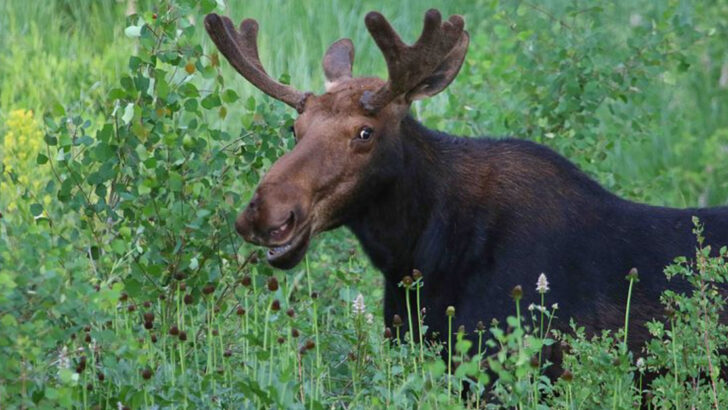Moose sightings in the wild are a rare and breathtaking event — but where can you find these majestic creatures?
Imagine stumbling upon a towering moose in its natural habitat, the excitement, the awe. But spotting one isn’t as simple as taking a stroll in any forest.
Some U.S. states are known for their high moose populations, making them prime locations for these unforgettable encounters. From towering mountains to vast wilderness, these states offer the best chances to witness these magnificent creatures up close.
In this post, we’ll take you on a journey through 16 U.S. states where you’re most likely to catch a glimpse of a moose. Get ready to explore the wild and learn where you can meet these gentle giants face-to-face.
Alaska
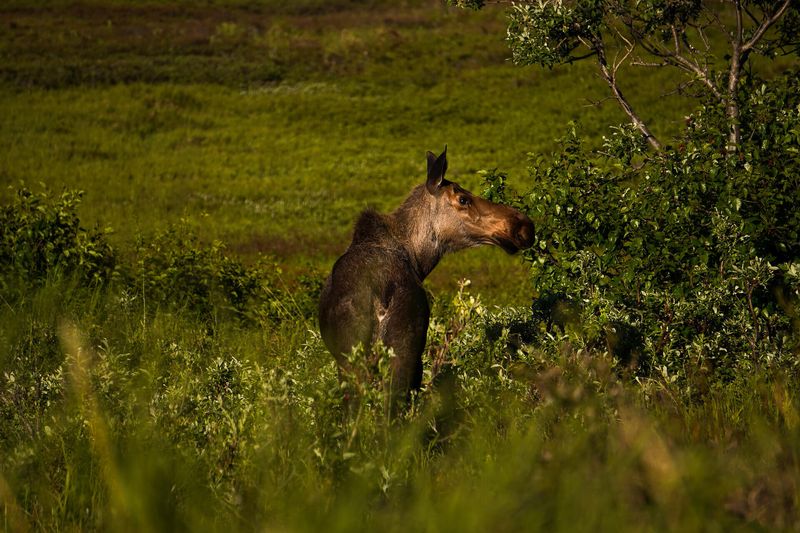
Alaska is undoubtedly the top state for moose sightings, boasting the highest moose population in the U.S. The state’s vast wilderness offers an ideal habitat for these creatures, with dense forests and ample wetlands. Moose are frequently seen near the highways and in national parks like Denali.
During the winter, they often venture into urban areas, making sightings common even in cities like Anchorage. Alaskans are familiar with these majestic animals, and visitors are advised to keep a safe distance. Moose here are often observed browsing willow and birch trees, especially during the colder months.
Maine
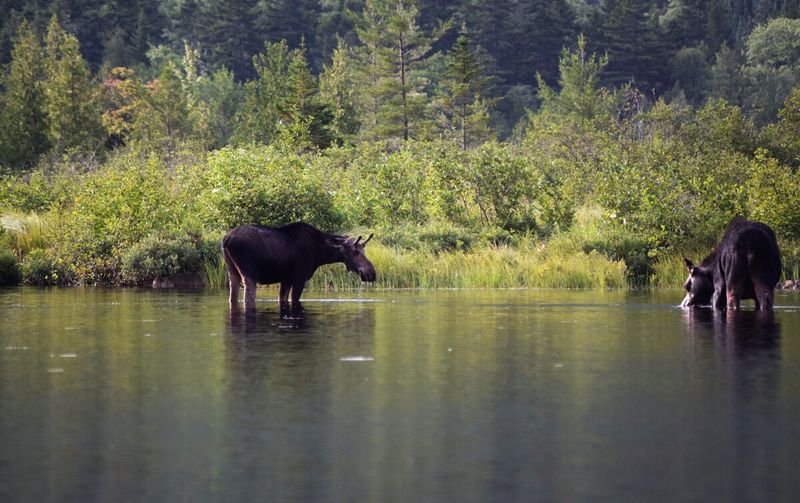
Maine is a prime location for those eager to catch a glimpse of moose. The state’s North Woods region is particularly renowned for moose sightings. Moosehead Lake and Baxter State Park are hotspots where these animals are frequently observed.
Moose thrive here due to the plentiful food supply and natural cover. Visitors often spot them wading in bogs and shallow ponds. In the fall, the foliage provides a stunning backdrop for moose photography. Maine’s long-standing commitment to wildlife conservation ensures that moose populations remain healthy and stable, delighting locals and tourists alike.
New Hampshire
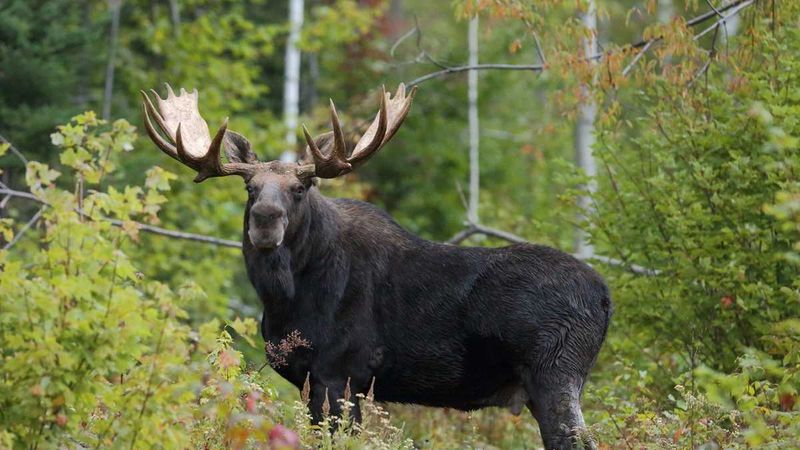
New Hampshire offers many opportunities to see moose, particularly in the northern part of the state. The White Mountains and the Great North Woods are renowned for frequent sightings.
Autumn is a popular time for moose watching, as the animals are more active and the scenery is breathtaking. Dedication to wildlife conservation in New Hampshire has helped maintain a healthy moose population. Moose tours are a great way to learn more about these creatures while ensuring a safe and respectful viewing experience. Tourists are encouraged to bring binoculars for optimal viewing from a distance.
Vermont
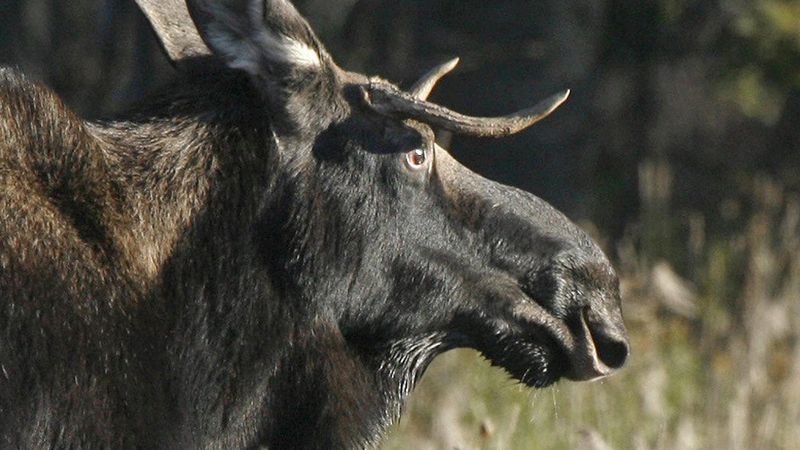
Vermont’s beautiful landscape provides a perfect setting for moose sightings. The Northeast Kingdom region, with its dense woods and rolling hills, is a moose haven. These animals are often found near swamps and marshy areas.
The Green Mountains are another hotspot for moose activity. Visitors are likely to spot moose near dawn or dusk when they are most active. Vermont’s commitment to preserving natural habitats supports a thriving wildlife population. Wildlife enthusiasts can join guided tours that offer educational insights and increase the chances of encountering these magnificent animals in their natural habitat.
Minnesota
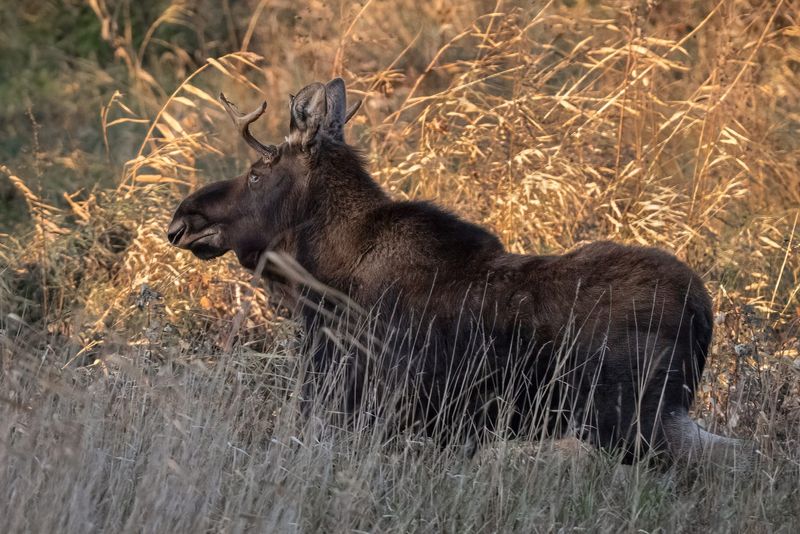
Minnesota is home to a significant moose population, especially in the northeastern part of the state. The Superior National Forest and Boundary Waters Canoe Area Wilderness are prime locations for sightings.
In winter, moose are often seen near roads, seeking out road salt. The state’s conservation efforts focus on maintaining moose habitats and monitoring populations. Visitors can explore state parks and wilderness areas for the best chance of encountering these animals. Moose are typically solitary, making each sighting a unique and memorable experience. Travelers should be prepared for cold conditions when venturing out for moose viewing.
Wyoming

Wyoming, with its expansive landscapes and stunning national parks, is a great place for moose sightings. Grand Teton National Park is particularly known for its moose population.
The park’s diverse ecosystem supports a variety of wildlife, including moose that are often found near water bodies. During the summer, moose sightings are common in the meadows and marshes. Wyoming’s commitment to preserving its natural beauty ensures that moose and other wildlife thrive. Visitors are encouraged to explore the park’s trails and vantage points for a higher chance of witnessing these gentle giants in their natural surroundings.
Montana
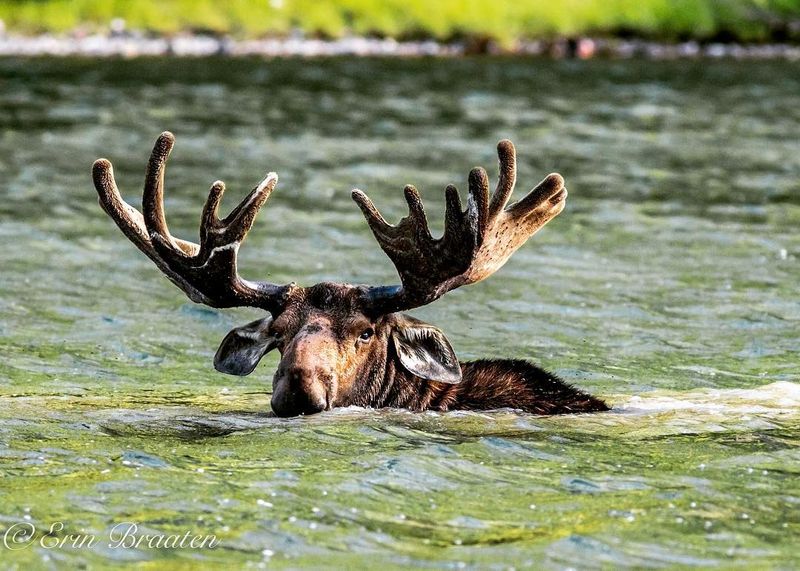
Montana’s rugged terrain and vast wilderness are perfect for moose. Glacier National Park is a notable location where moose are frequently sighted.
The park’s lush vegetation and numerous water sources provide an ideal habitat. Moose are often seen grazing near lakes and streams or cooling off in the water. Early morning or late evening is the best time for sightings, when the animals are most active. Montana’s focus on wildlife conservation helps maintain healthy moose populations. Visitors can enjoy the park’s natural beauty while observing these impressive creatures from a safe and respectful distance.
Idaho
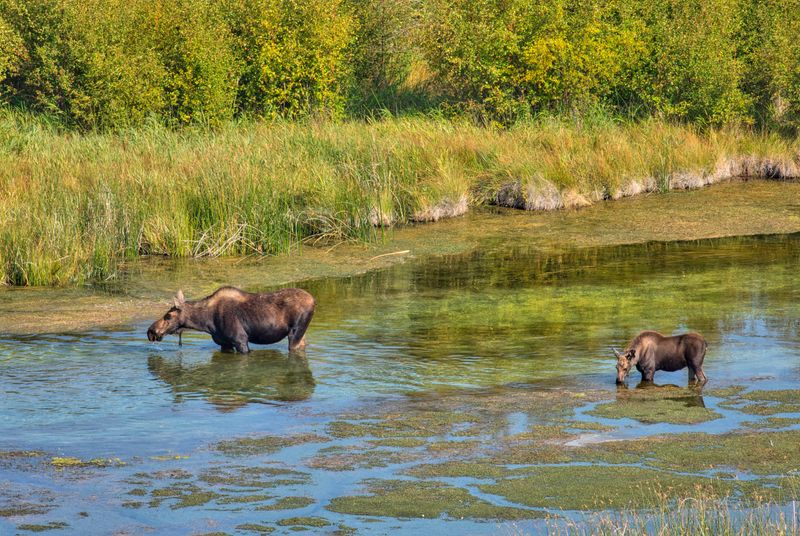
Idaho offers wonderful opportunities for moose sightings, particularly in the northern regions. The state’s expansive forests and wetlands are ideal habitats.
The Idaho Panhandle National Forests and the area around Lake Coeur d’Alene are popular spots for observing moose. These animals are often spotted feeding on aquatic plants or resting in the shade during warmer months. Idaho’s commitment to preserving its wilderness areas ensures sustainable moose populations. Moose encounters here provide a chance to appreciate the state’s natural beauty and the diverse ecosystems that support such wildlife. Visitors are encouraged to maintain a respectful distance.
Colorado
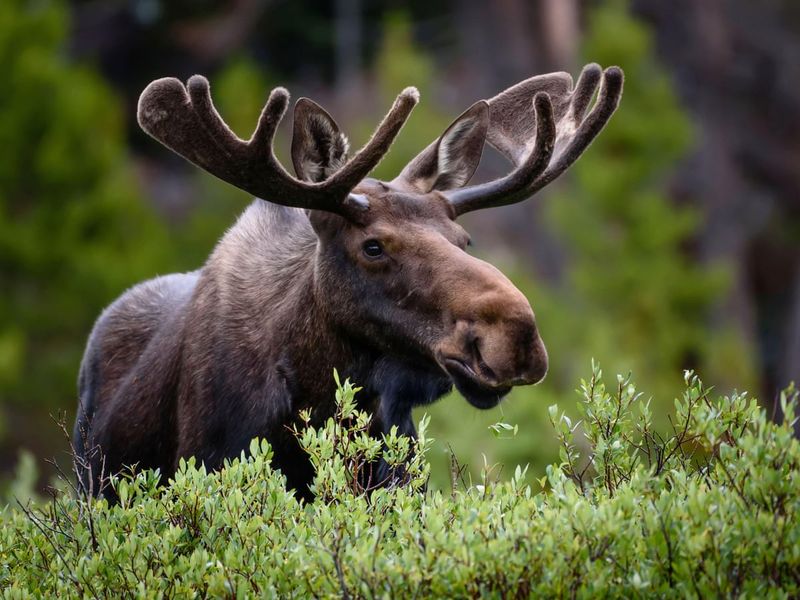
Colorado’s diverse landscapes are home to a growing moose population. The state’s high-altitude regions, particularly the Colorado Rockies, provide excellent moose habitats.
Rocky Mountain National Park is a prime location for moose sightings, especially in the Kawuneeche Valley. Visitors often spot moose near willow thickets and alpine lakes. Colorado’s wildlife conservation programs focus on habitat preservation and population management. The state offers educational tours and resources for those interested in learning more about moose. Travelers should bring cameras and binoculars to capture the majestic sight of moose against the stunning mountain backdrop.
Utah
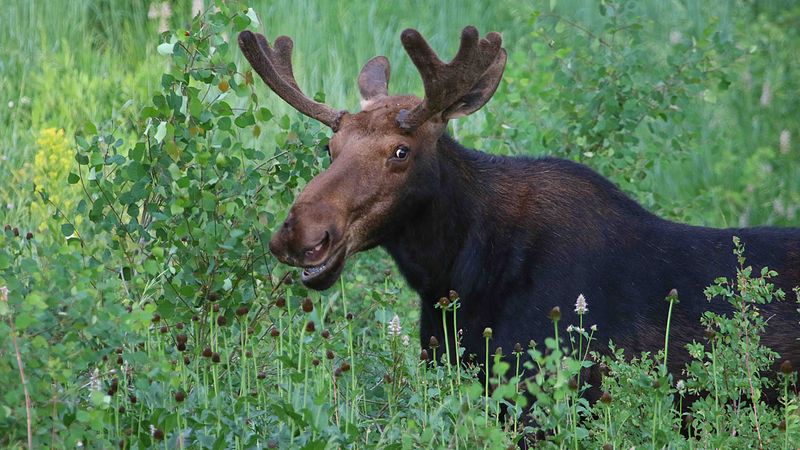
Utah’s varied landscapes, from mountains to wetlands, offer excellent moose viewing opportunities. Uinta-Wasatch-Cache National Forest is a known hotspot for sightings.
Moose are often observed near streams and lakes, benefiting from the abundant foliage. Utah’s wildlife management efforts are focused on ensuring sustainable populations. The state provides ample information for wildlife enthusiasts looking to explore moose habitats. Visitors are advised to plan early morning or late evening excursions for the best viewing opportunities. With its striking natural scenery, Utah offers not only moose sightings but also a glimpse into the diverse environments they inhabit.
Washington
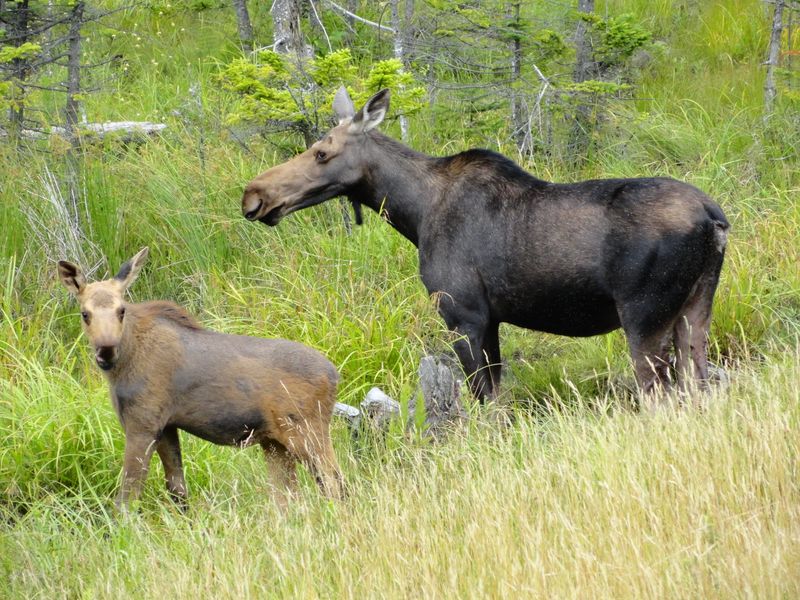
Washington’s diverse ecosystems provide rich habitats for moose, especially in the northeastern regions. The Colville National Forest and surrounding areas are noted for frequent moose sightings.
Moose thrive in the state’s forests, feeding on the abundant vegetation. Sightings are common near rivers and wetlands, where moose are often seen drinking or foraging. Washington’s commitment to wildlife conservation helps ensure stable moose populations. Visitors are encouraged to explore forest trails and use binoculars for the best chance of spotting moose. Respectful observation practices are important to avoid disturbing these magnificent animals.
Massachusetts

Massachusetts offers surprising opportunities for moose sightings, particularly in the central and western parts of the state. Quabbin Reservoir and the Berkshire Mountains are renowned for their moose populations.
The state’s commitment to wildlife conservation has allowed moose numbers to grow in recent years. Moose are often seen near water bodies, grazing or cooling off. Early morning and late afternoon are the best times for sightings. Visitors should bring binoculars to enhance their viewing experience. Massachusetts provides a unique blend of natural beauty and wildlife observation, making it a delightful destination for moose enthusiasts.
Michigan
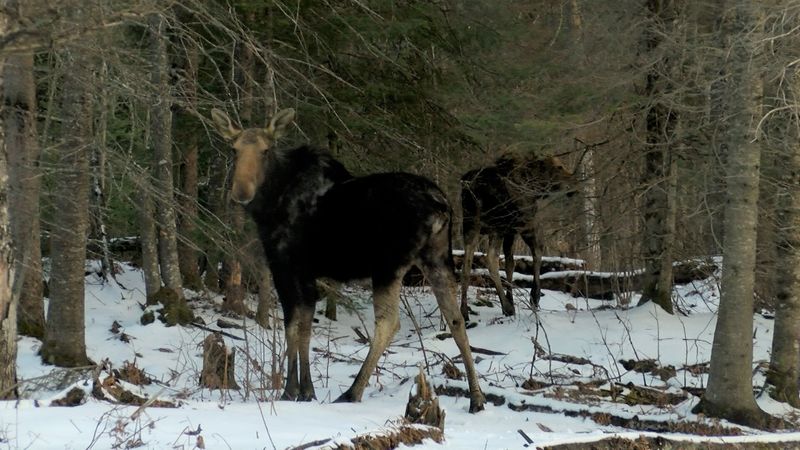
Michigan, particularly in the Upper Peninsula, is a promising area for moose sightings. The area’s lush forests and numerous lakes provide an ideal habitat for these animals.
Isle Royale National Park is a key location for observing moose, where they are often spotted near shorelines. Michigan’s wildlife conservation efforts focus on habitat preservation and population monitoring. Visitors should be prepared for wilderness conditions when exploring moose habitats. With its rich natural landscapes, Michigan offers not only moose viewing opportunities but also a chance to connect with nature in a serene setting. Patience and respect are key to successful wildlife observation.
New York
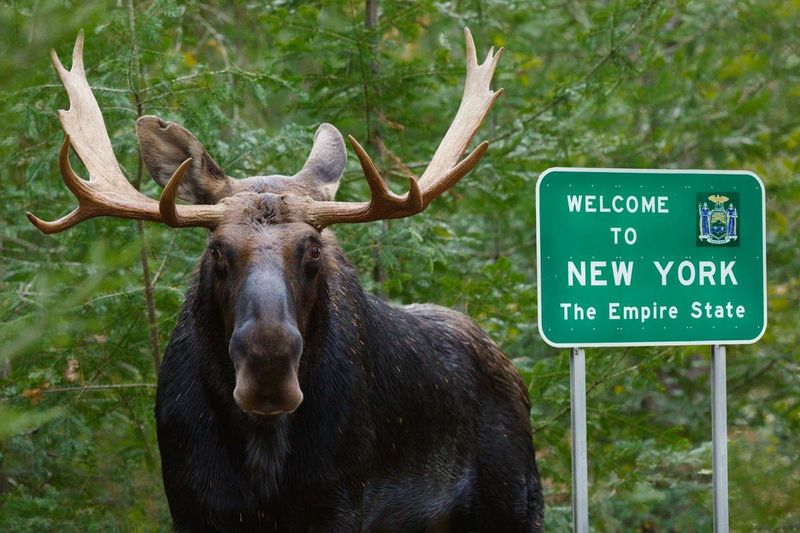
New York’s Adirondack Mountains provide a stunning backdrop for moose sightings. This region’s extensive forests and wetlands create a suitable habitat for moose.
Visitors often spot these animals near ponds and streams, especially during the early morning or late afternoon. New York’s conservation programs aim to protect wildlife and preserve natural habitats, supporting a healthy moose population. Exploring the Adirondack trails offers a chance to observe moose in their natural environment, alongside the region’s breathtaking scenery. Visitors are reminded to maintain a respectful distance and follow guidelines for safe wildlife observation.
North Dakota
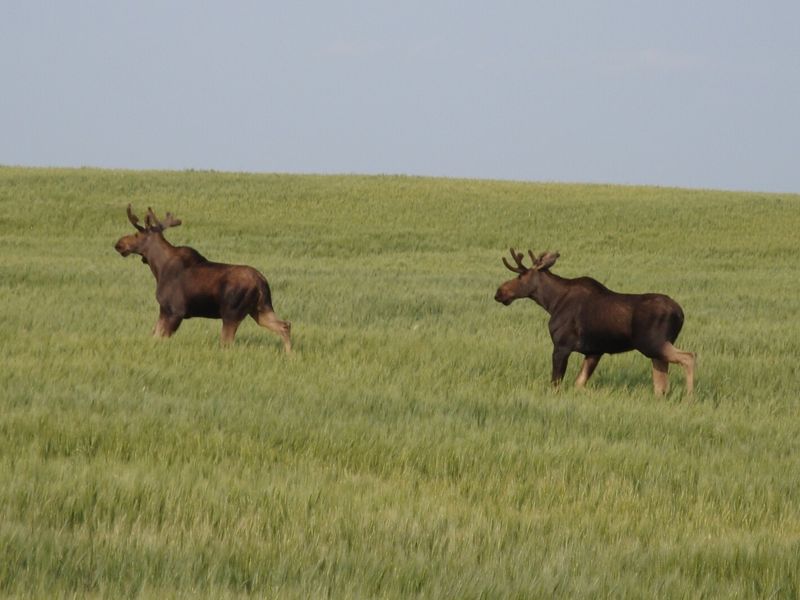
North Dakota might not be the first place that comes to mind for moose sightings, but the state offers surprising opportunities. The Turtle Mountains and surrounding areas are known for moose activity.
The state’s wildlife management efforts focus on supporting diverse ecosystems, which in turn benefit moose populations. Visitors often encounter moose near water sources, feeding or wandering. Sightings are more frequent during the cooler months. North Dakota’s open landscapes provide a unique setting for observing these majestic animals. Wildlife enthusiasts should bring cameras and binoculars to capture the experience. Respectful observation is key to a successful encounter.
Wisconsin
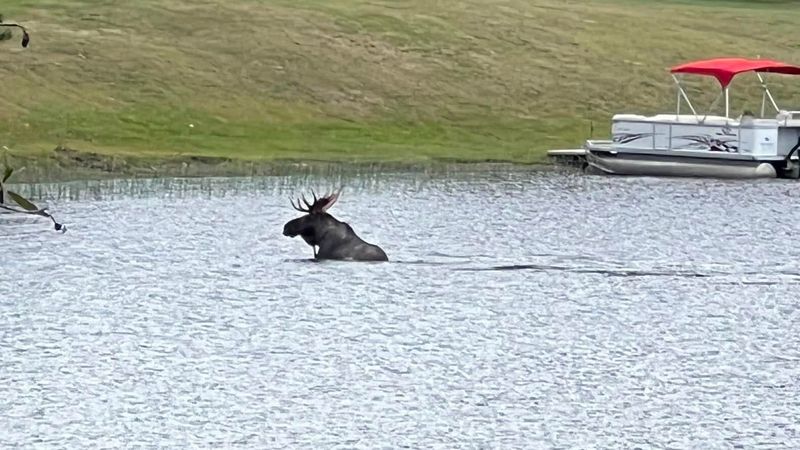
Wisconsin’s northern regions provide excellent habitats for moose, particularly in the Chequamegon-Nicolet National Forest. The dense woods and abundant water sources support healthy populations.
Moose are often spotted near wetlands, grazing or cooling off in the water. Wisconsin’s conservation initiatives focus on preserving natural habitats and monitoring wildlife populations. Visitors are encouraged to explore the state parks and forests for the best chance of moose sightings. Early morning and late afternoon are optimal times for observation. Patience and a keen eye are essential for successful wildlife encounters in Wisconsin’s beautiful landscapes.

